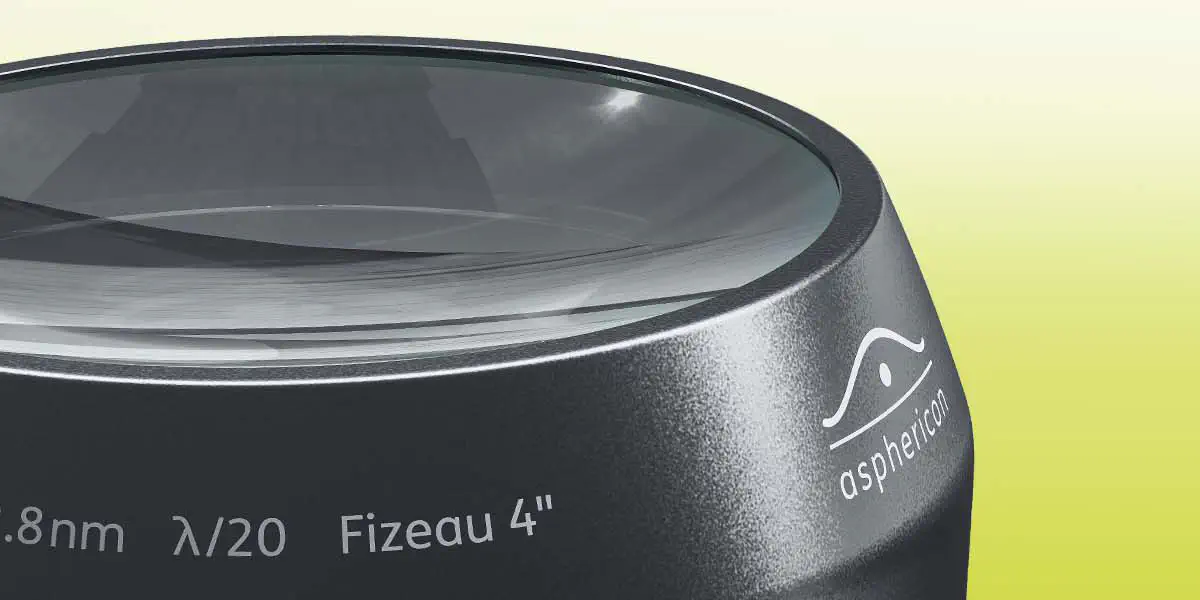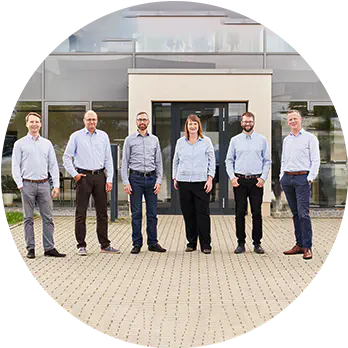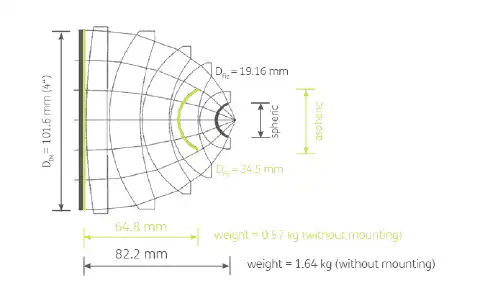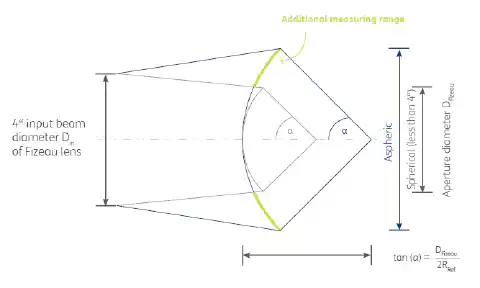
The aspherization of Fizeau interferometry
Reference project
Development of an aspherical Fizeau lens
Traditional Fizeau lenses are usually based on spherical optics, and their measuring range is limited by the diameter of the input beam. Additional adapters or beam expanders are required to enlarge the measuring range, and some diameters are too small to be measured. However, working on behalf of a leading manufacturer of measuring equipment, asphericon has now developed an aspherical Fizeau lens which can produce large diameters without any additional components.
Project details
The measuring ranges of spherical lenses for interferometers are often limited by their small input beam diameter. Enlargement requires additional adapters or beam expanders. Small diameters usually can’t be measured at all with spherical Fizeau lenses. asphericon was therefore commissioned by a leading international manufacturer of measuring equipment to develop and produce an aspherical Fizeau lens that has a larger measuring range and is also easy to use. Compared to traditional Fizeau lenses, it enables a significantly larger measuring range of up to R/D 0.55. Used as a single component without additional adapters, the 4’’ Fizeau lens covers a measuring range that was previously only measurable with 6’’ lenses. This is particularly advantageous with small focal ratios.
Project realization
The use of a high-end asphere combined with an innovative mount design enables the diameter of the Fizeau surface to be used in full. The aspherical Fizeau transmission lens transforms a collimated beam into a spherical wavefront. The last surface of the lens – the Fizeau surface – separates the reference and measurement wavefronts. A spherical lens ideally has an input aperture of 4". By contrast, the aspherical lens expands intrinsically to create a much larger diameter.
The design of the lens is optimized for long-term clean components with a convenient gripping rim and a stowing system for safe transportation. The use of a 4" Zygo bayonet connector makes it suitable for other interferometers, too. Other compelling features of asphricon’s Fizeau lens include its relatively low weight (thanks to the reduction of the number of components), a high-quality transmitted wavefront, and a Fizeau surface quality of λ/10 and λ/2.
Comparison spherical & aspheric design
Fig. 1: Typical design of a Fizeau lens including comparison of the positions of the Fizeau surfaces in a spherical (= grey) and aspherical (= green) design with the same focal ratio (R/D 0.55).
Additional measuring range
Fig. 2: Comparison of the measuring range of a spherical and an aspherical 4" lens. The aperture angle α is the same for both (i.e. the aspherical lens has a larger range that can be used to measure test objects with the same number of apertures). The formula gives the relationship between the R/D ratio and the angle α.
Optics for Fizeau lenses at a glance:
- Innovative lens design with aspherical surfaces, reduced number of lenses, and a true 4″ system input aperture
- Intrinsic expansion enables an output aperture with a larger diameter
- Selected spacing of Fizeau radii enables a large measuring range



